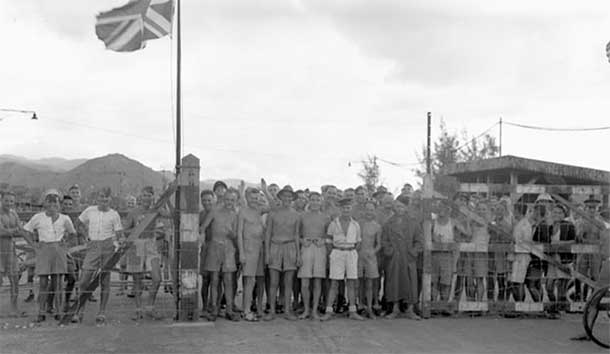550 Canadian Soldiers Never Returned
Thunder Bay – December 7 is remembered as Pearl Harbour Day. The day that United States President Roosevelt said, “Will live in infamy”.
It is also the day 1941, The Royal Rifles of Canada along with the Winnipeg Grenadiers with British, Indian, and Chinese counterparts were battling the Japanese 38th Division defending Hong Kong.
There were 1975 Canadian soldiers engaged in the defence of Hong Kong.
Canada formally declared war on Japan on December 8, 1941.
The attack on Hong Kong came four hours after the Japanese attack on Pearl Harbour.
On the morning of December 7, 1941 the entire garrison was ordered to war stations. The Canadian force were ferried across from Kowloon to the island, and by 5 pm the battalions were in position and Brigadier Lawson’s headquarters was set up at Wong Nei Chong Gap in the middle of the island.
Fifteen hours before the Japanese attacked, all Hong Kong defence forces were in position.
On December 8, at 8 pm, Japanese aircraft attacked the Kai Tak airport and easily damaged or destroyed the few aircraft of the Royal Air Force. The nearly-empty camp at Sham Shui Po was the next target, where two men of the Royal Canadian Signals were wounded. They were the first Canadian casualties in Hong Kong.
That same morning, the Japanese ground forces moved across the frontier of the New Territories and met resistance from the forward forces of the Mainland brigade. In the face of strong enemy pressure these advance units fell back to the Gin Drinkers’ Line. The defenders hoped to defend the line for a week or more but, on December 9, the Japanese captured Shing Mun Redoubt, an area of high ground and the most important strategic position on the left flank of the Gin Drinker’s Line. The Japanese had launched their attack under cover of darkness and there was fierce fighting, but in the end the Japanese were victorious. Their victory at night revealed how General Maltby had completely underestimated his enemy. In a dispatch he had noted that “Japanese night work was poor.” But within hours of their first attack, Shing Mun Redoubt was in enemy hands.
The fighting in Hong Kong ended with immense Canadian casualties: 290 killed and 493 wounded. The death toll and hardship did not end with surrender.
Even before the battle had officially ended, Canadians would endure great hardships at the hands of their Japanese captors. On December 24, the Japanese overran a makeshift hospital in Hong Kong, assaulting and murdering nurses and bayoneting wounded Canadian soldiers in their beds.
After the colony surrendered, the cruelty would continue.
For more than three and a half years, the Canadian Prisoners of War were imprisoned in Hong Kong and Japan in the foulest of conditions and had to endure brutal treatment and near-starvation.
In the filthy, primitive POW quarters in Northern Japan, they would often work 12 hours a day in mines or on the docks in the cold, subsisting on rations of 800 calories a day. Many did not survive.
In all, more than 550 of the 1,975 Canadians who sailed from Vancouver in October 1941 never returned.

